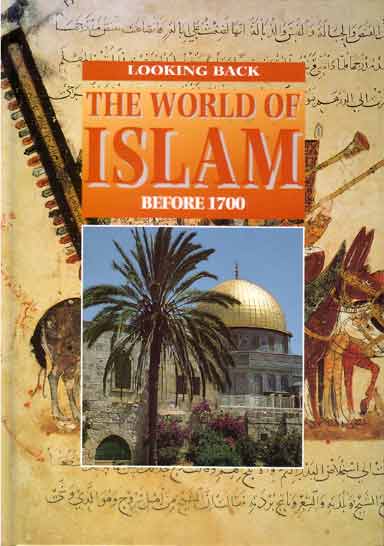
Islam pre 1700
Book review by Fred Lane
Martell, H.M. Looking back: The world of Islam before 1700. Evans Brothers Limited: London 1998. 62 pp, hardback, $19.99.
(But check the remainders box for a bargain.)
Indonesia, our near-north neighbour, has by far the largest population of Muslims of any country in the world. Some, like the Bali bombers, seem to be as fundamentalist and fanatical as the Islamist extremists found in Afghanistan, Iraq or Palestine. In recent years Australian civilians, as well as servicemen and women, have been targets for people who, encouraged strongly by their religious leaders, seek to destroy them. It is our responsibility, it may be argued, that we understand at least a little of what they claim to be a chief motivating force, their religion.
Martell’s primer, often found in bookshop remainder sections, is a handy illuminating guide showing how the religion started and some of what it achieved in its first 1100 years. Many of us, particularly those who grew up in the first half of the last century, have a very poor understanding of the rich Muslim culture and its important influence on the history of the world.
Battle of Lepanto
Indeed, had the close-fought Battle of Lepanto in the eastern Mediterranean gone the other way in 1571, many more of us might well be facing Mecca more often.
Martell reminds us how, despite initially excelling in science and technology, and despite establishing highly respected centres of learning, open to all, including Jews, the Islamic Ottoman, Safavid and Mughal Empires disintegrated over the years in the face of internal dissent and aggressive competition, particularly at the hands of European Christian nations. This book gives another perspective to some of what Muslim extremists are trying to claim.
Martell describes the fundamental Muslim values of learning and tolerance. She also points to some of the world’s most precious architectural jewels, such as the Taj Mahal, that were created by Muslims. These attributes are in stark contrast to the violence expounded by the militant extremists.

On the other hand, there is no glossing over the betrayals and treachery of the early years, just after Mohammed’s death. Factions struggled murderously with one another for power, gold and prestige, in much the same way the Popes and European kings struggled for similar goals about the same time. Unfortunately, for the Muslims, their fratricide was more deadly than the Europeans’.
It is odd how popular texts, such as Curtis’s The great political theories, gloss over the Muslim influence. Anything east of Jerusalem is virtually ignored. To argue that the Muslims or Asians produced nothing relevant betrays abysmal ignorance. Consider Schulze’s A modern history of the Islamic World for another version. On the other hand, Geraldine Brooks’s Nine parts of desire paints yet another picture of cruelty and inhumanity flourishing with the tacit blessing of the Muslim clerics.
References:
Brooks, G. Nine parts of desire: The hidden world of Islamic women. Anchor Books: New York 1994.
Curtis, M. (Ed.) The great political theories. Avon Books: New York, 1961.
Schulze, R. A modern history of the Islamic World. I.B. Taurus & Co: London. 2000. ($98.77).
